Assisted Hatch
Pauline Nolet
tielbreeders@yahoo.com
Assisting a hatch is
always risky. There are still veins running through the membranes
until shortly before the chick hatches. Assisting too soon can
cause hemorrhaging (bleeding) and, if that happens, in most cases
the chick will not survive.
The following photos and
commentary are NOT intended to be a guide to assisting a hatch.
If you suspect a chick may need assistance please contact your
vet.
In this particular egg,
the chick was stuck to the membrane which had dried out. The
chick was unable to turn within the egg to crack the shell as it
would in a normal
hatch.
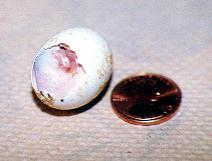 |
 |
| Here you can see
most of the baby covered by the white, dried membrane,
except for the beak which can be seen in the hole in the
membrane at the top of the hole made in the eggshell. |
This is the baby
after the membrane has been moistened to check for veins
before doing anything further. |
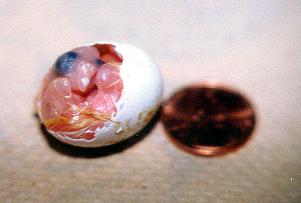 |
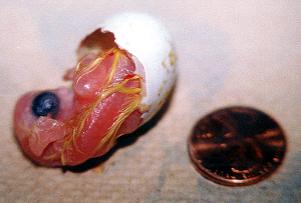 |
| Here the membrane
and more of the eggshell has been removed. The white egg
tooth can be seen on the beak. To the left of the beak is
the 'elbow' of the wing, and to the right is a 'knee'. |
With enough of the
shell removed the baby starts to free itself from the
eggshell. The baby should be allowed to finish getting
out of the eggshell on it's own if possible. |
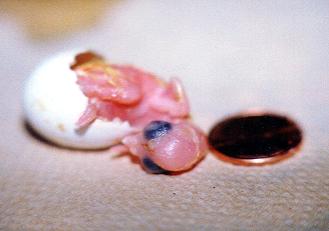 |
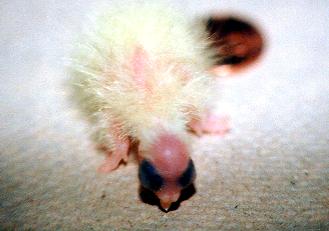 |
| Now the baby is
nearly free from the shell. One tiny foot can be seen on
the edge of the eggshell helping to push it off. |
And here is the
baby about 6 hours after hatching with it's down dried
and fluffy. |
-- Pauline Nolet --
-- tielbreeders@yahoo.com --
Comments, suggestions,
or broken links?
Please contact the webmaster: tielbreeders@yahoo.com

Revised: October 11, 1999
© Copyright 1999 Pauline Nolet
This page hosted by  Get your own Free Home
Page
Get your own Free Home
Page





